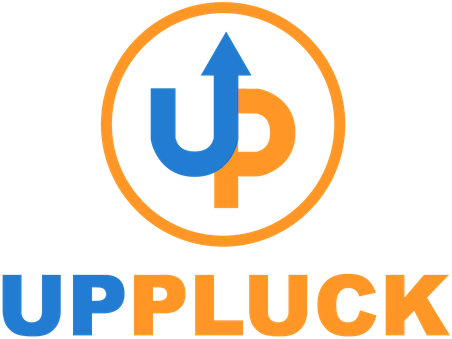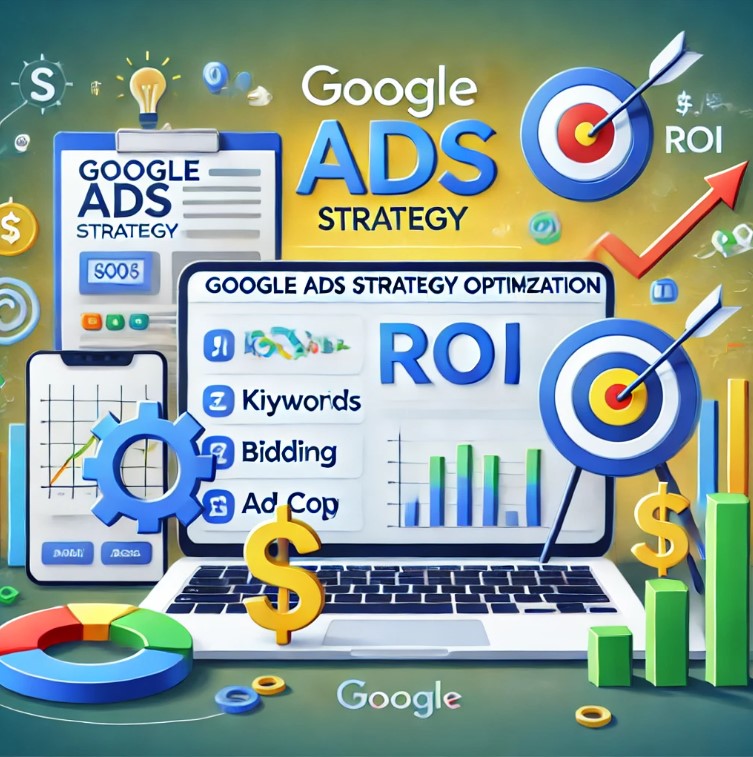In the digital marketing world, Google Ads remains one of the most powerful tools for driving traffic, generating leads, and boosting sales. But running a successful Google Ads campaign isn’t just about throwing money at the platform and hoping for the best. To truly maximize your ROI (Return on Investment), you need a strategic approach that ensures every dollar spent contributes to your bottom line.
In this guide, we’ll walk you through practical, actionable strategies to optimize your Google Ads budget and achieve better results without increasing your ad spend. Let’s dive in!
1. Understand Your Campaign Goals
Before you even create your first ad, it’s crucial to identify what you’re hoping to achieve. Are you looking to increase website traffic, generate leads, or boost product sales? Different objectives require different approaches:
- Brand Awareness: Focus on Display Ads and optimizing for impressions.
- Lead Generation: Use Search Ads with conversion tracking.
- E-commerce Sales: Invest in Google Shopping Ads with a focus on ROI.
By clearly defining your goals upfront, you can align your budget and bidding strategy to prioritize what matters most to your business.
2. Leverage Keyword Research to Cut Wasted Spend
Keywords are the foundation of any successful Google Ads campaign. Investing in the right keywords ensures that your ads reach users who are genuinely interested in what you offer. Here’s how to optimize your keyword strategy:
- Use Long-Tail Keywords: These are more specific phrases (e.g., “affordable SEO services for small businesses”) that typically have lower competition and cost per click (CPC).
- Focus on High Intent Keywords: Target terms that signal purchase intent, like “buy,” “hire,” or “best [service/product].”
- Negative Keywords: Add irrelevant keywords to your negative list to prevent your ads from showing up in unrelated searches. This helps cut wasted spend and improves your ad quality score.
3. Optimize Ad Copy for Better Click-Through Rates (CTR)
Your ad copy plays a huge role in determining whether users click on your ad or scroll past it. Craft compelling, action-oriented text to boost engagement:
- Include a Strong Call-to-Action (CTA): Use phrases like “Get Started Today,” “Limited Offer,” or “Download Now” to encourage clicks.
- Highlight Unique Selling Points (USPs): Showcase what makes your product or service stand out, such as free shipping, a money-back guarantee, or exclusive discounts.
- Test Variations: Continuously A/B test different ad copies to see which ones resonate best with your target audience.
4. Leverage Ad Extensions to Enhance Visibility
Ad extensions are free tools provided by Google that can improve your ad’s visibility and CTR without increasing your budget. Popular extensions include:
- Sitelink Extensions: Direct users to specific pages on your site.
- Callout Extensions: Highlight key benefits, such as “24/7 Customer Support” or “Free Consultations.”
- Call Extensions: Add a phone number to your ad for easy contact.
Using these extensions can lead to higher quality scores and better ad placements, ultimately lowering your CPC.
5. Refine Your Targeting Settings
One of the biggest mistakes advertisers make is not fully utilizing Google Ads’ targeting features. To ensure you’re reaching the right audience:
- Geo-Targeting: Focus your ads on locations where your target customers are most likely to be.
- Ad Scheduling: Run ads during peak hours when your audience is most active.
- Audience Segmentation: Use remarketing lists to target users who’ve interacted with your site before, or use in-market audiences to reach people actively searching for similar products.
6. Monitor and Optimize Quality Score
Google’s Quality Score (QS) is a metric that determines how relevant and useful your ad is to users. A higher QS can lead to better ad positions and lower costs. Focus on:
- Improving Landing Page Experience: Ensure your landing pages are fast, mobile-friendly, and relevant to your ad copy.
- Increasing Ad Relevance: Align your keywords, ad text, and landing page content.
- Boosting CTR: Higher click-through rates often result in better quality scores, so continuously refine your ads to maximize engagement.
7. Utilize Smart Bidding Strategies
Google offers several automated bidding strategies that leverage machine learning to optimize bids in real-time. These include:
- Maximize Conversions: Automatically sets bids to help you get the most conversions for your budget.
- Target CPA (Cost Per Acquisition): Focuses on getting conversions at a specific cost.
- Target ROAS (Return on Ad Spend): Aims to maximize revenue for your ad spend.
Test different bidding strategies to see which one works best for your campaign goals.
8. Track, Analyze, and Adjust Regularly
The digital landscape is constantly changing, so ongoing analysis is key to maintaining a high ROI. Set up conversion tracking to measure your performance accurately:
- Use Google Analytics: Track user behavior on your website and link it to your Google Ads account for better insights.
- Run Regular Audits: Review your campaigns weekly or monthly to spot underperforming keywords, ads, or ad groups.
- Make Data-Driven Adjustments: Use the insights to adjust your budget allocation, pause ineffective ads, and optimize your top performers.
9. Harness the Power of Remarketing
Remarketing is a powerful way to stay top-of-mind for users who have previously visited your website but didn’t convert. With remarketing:
- Target Abandoned Carts: Show ads to users who left items in their shopping cart.
- Upsell to Existing Customers: Encourage previous customers to upgrade or purchase complementary products.
- Personalize Ads: Use dynamic remarketing to display specific products users viewed on your site.
10. Set Realistic Budgets and Scale Gradually
It can be tempting to throw a large budget at your Google Ads campaign right away, but it’s wiser to start small, optimize, and scale gradually. By regularly refining your strategy, you’ll be able to stretch your ad dollars further and achieve a better ROI.
- Allocate More to High-Performing Campaigns: Once you’ve identified which campaigns are driving the best results, increase the budget accordingly.
- Keep Testing and Experimenting: Google Ads success is a continuous process. Always be on the lookout for new opportunities to optimize.
Final Thoughts: Achieving Google Ads Success
Maximizing your Google Ads ROI isn’t about having the largest budget—it’s about working smarter with the resources you have. By refining your keywords, optimizing ad copy, leveraging automation, and continuously analyzing your results, you can significantly boost the impact of your ad spend. Remember, digital advertising is a dynamic space; what works today may not be as effective tomorrow. That’s why ongoing testing and refinement are essential for staying ahead of the competition.
The journey to a successful Google Ads campaign is filled with opportunities to optimize, pivot, and grow. Start implementing these strategies today, and watch your business reach new heights. 🚀📊
Need expert help to take your Google Ads campaigns to the next level? Let UpPluck Social be your partner in growth! Contact us at 888-644-4966 or visit www.uppluck.com for a complimentary strategy session.

